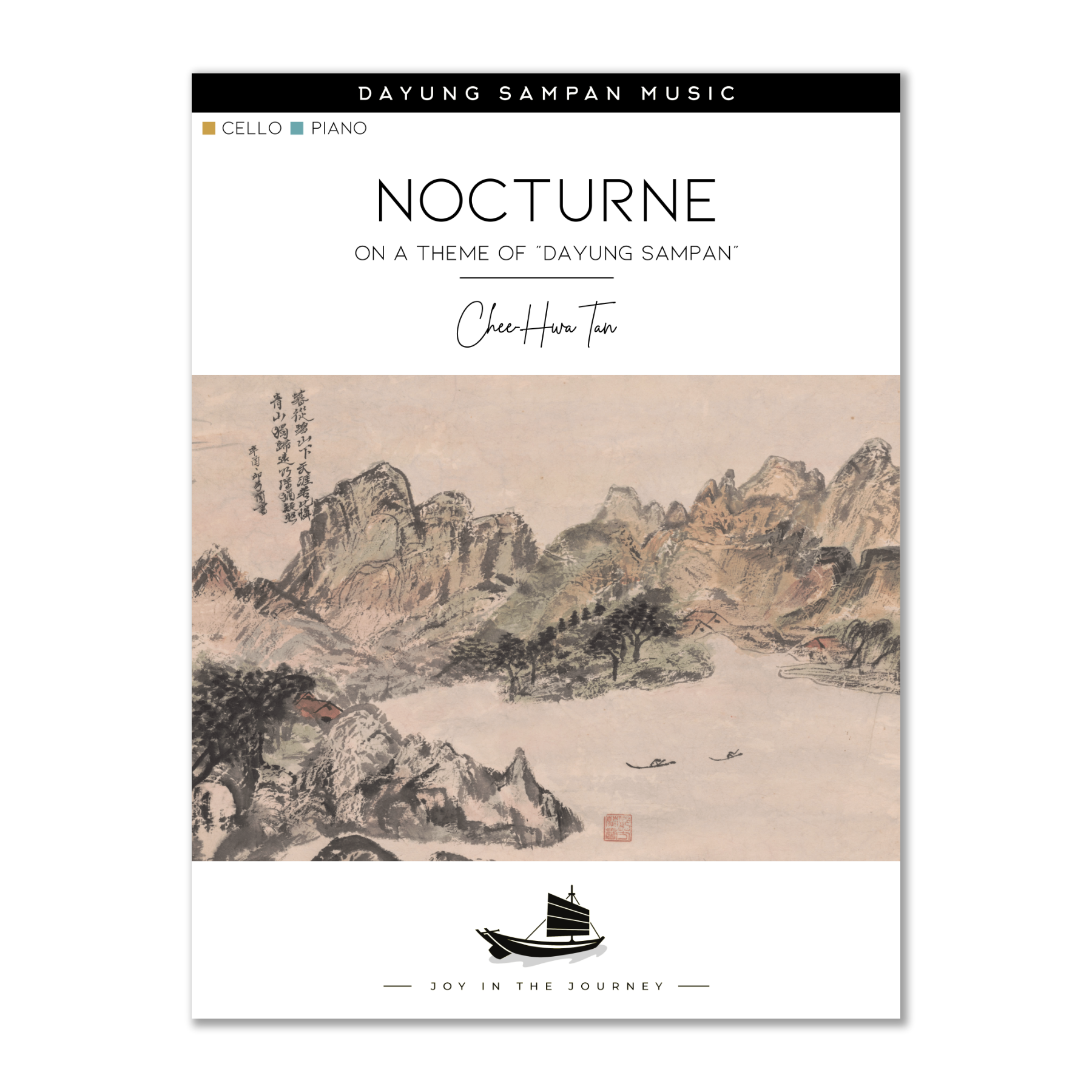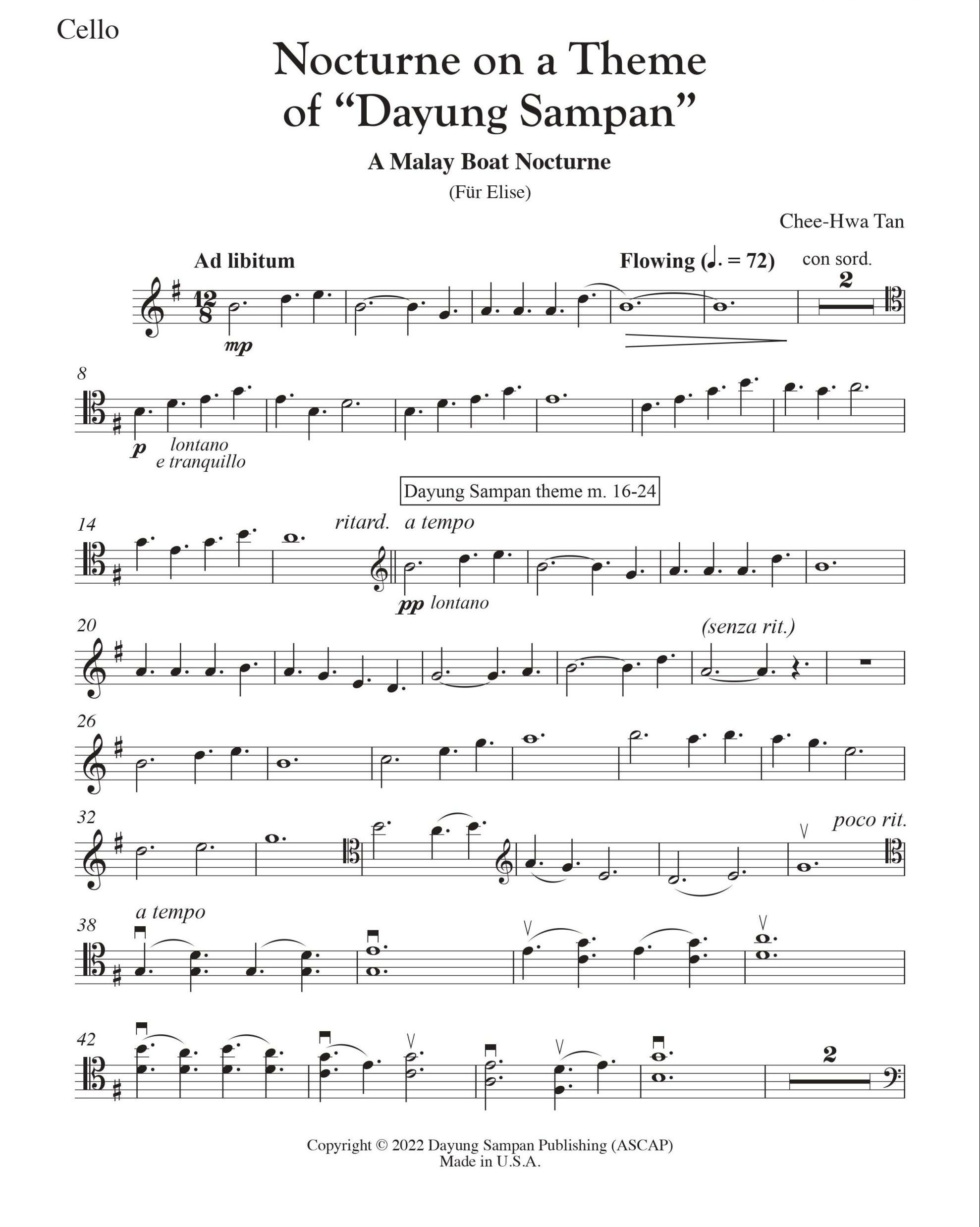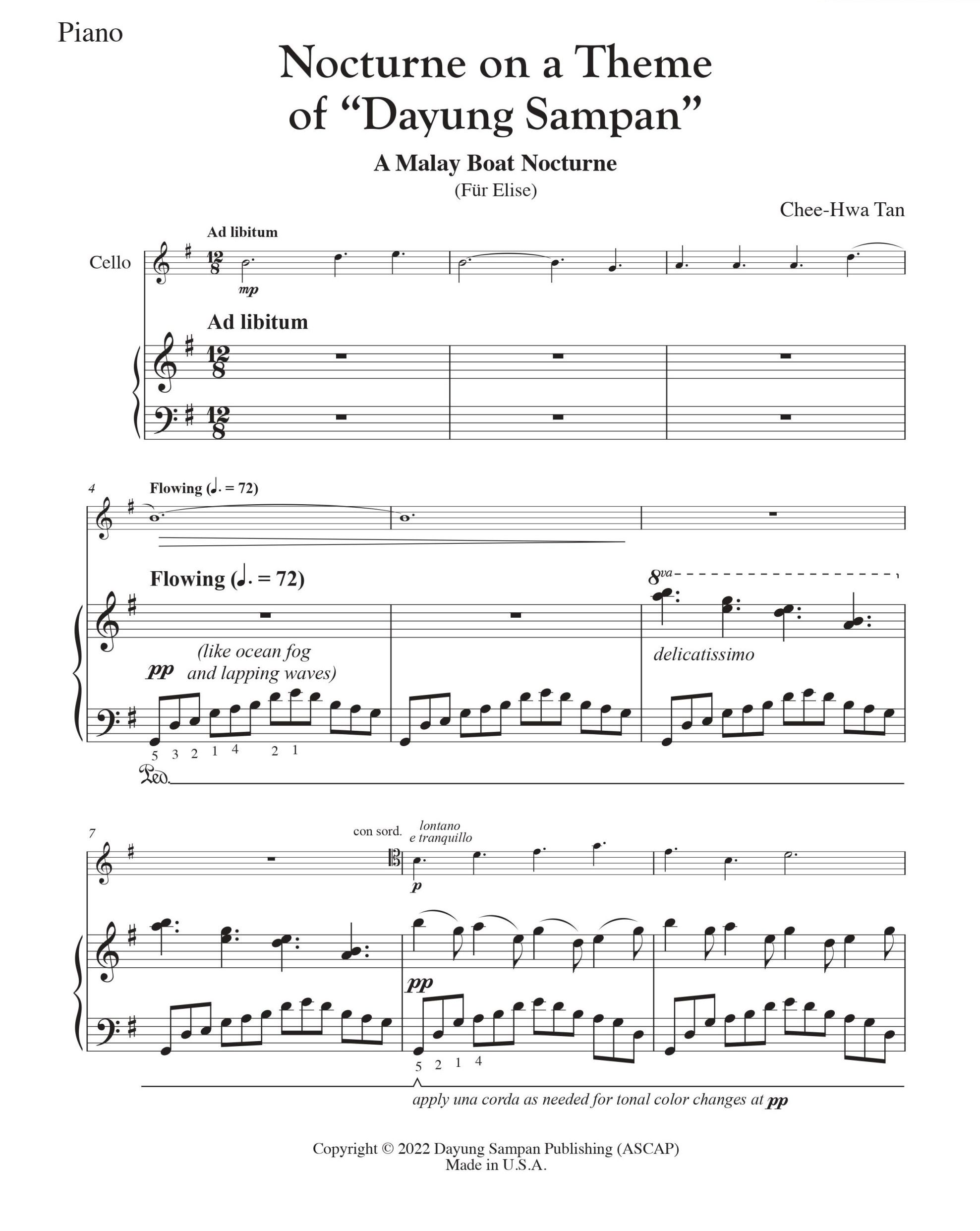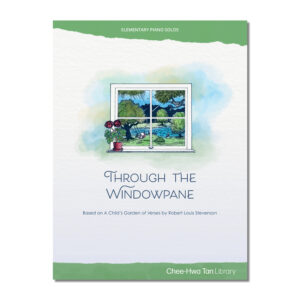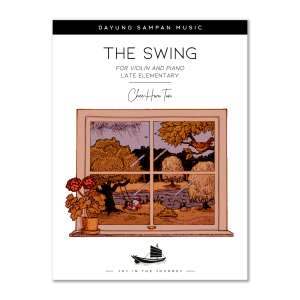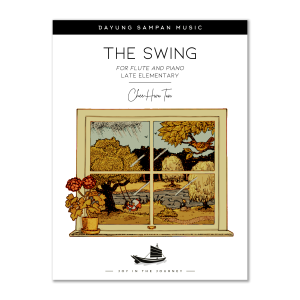Description
Composer Notes: The 9-bar folk theme, “Dayung Sampan,” originated as a Malay language folk song with roots in the traditional Chinese orchestra (gambang kromong) from Betawi, Indonesia. The song became a part of the malay folk song curriculum in Malaysia and Singapore and was often taught to school children. The melody was further popularized by Teresa Teng, a famous Taiwanese singer, in her song with completely different lyrics, “Tian Mi Mi.” One version of the original lyrics are as follows (Singapore has their own version for nationalistic purposes as well): Dayung sampan (Paddle the boat) Dayung, dayung sampan (Paddle, Paddle the boat) Datang dari negara China (Coming from the land of China) Sampai Singapura (Until Singapore) Dayung sampan (Paddle the boat) Dayung, dayung sampan (Paddle, Paddle the boat) Menuju kita ke utara, (Heading us toward the north) Sampai Malaysia (Until Malaysia) Sampai Malaysia. (Until Malaysia) There are several versions of lyrics that involve friendship, etc. It can also utilize the malay “pantun” (traditional, improvisational style poem) where the first two lines may have no relationship with the next two lines (like in “Burung Kakak Tua”).

